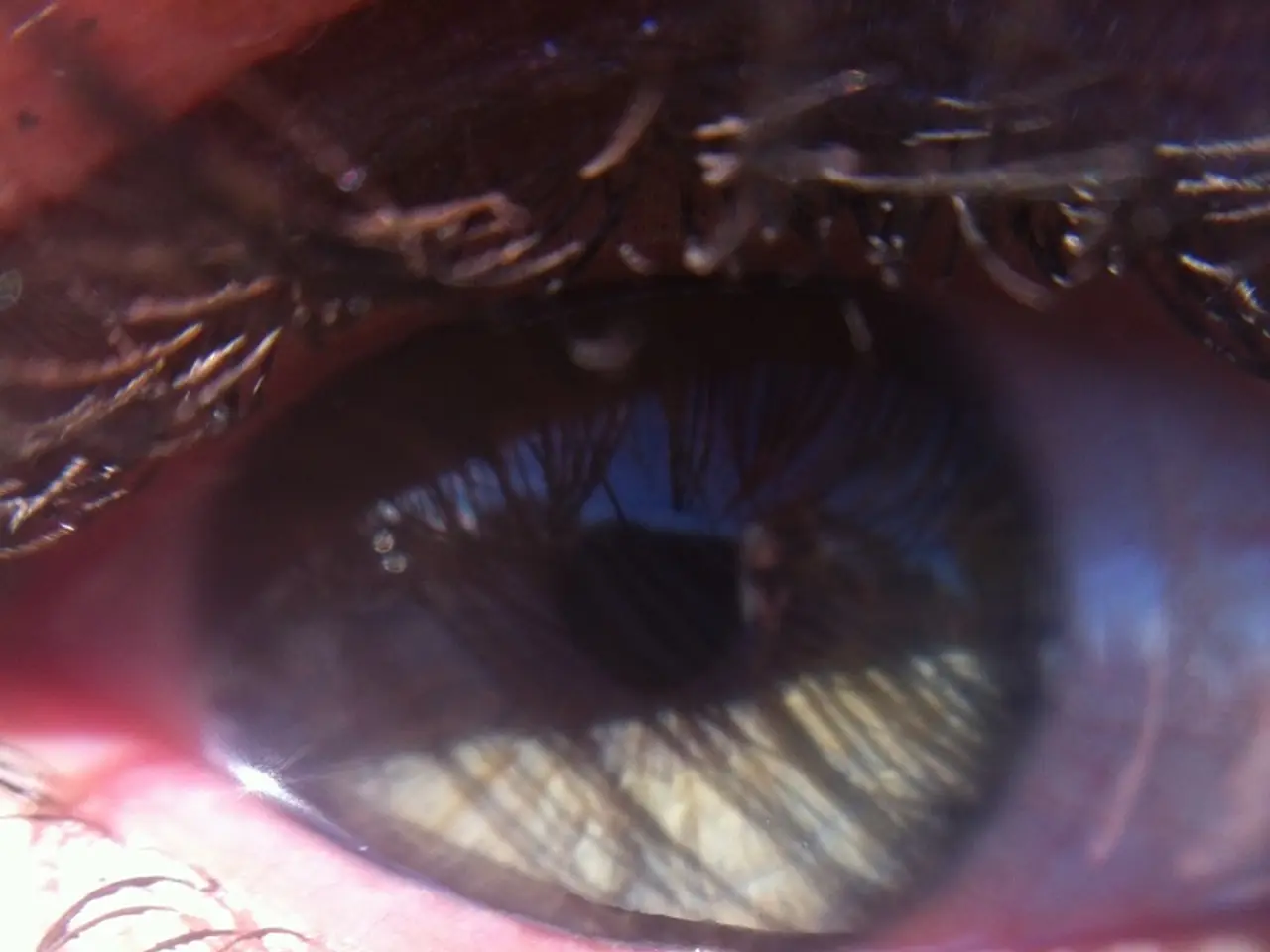Diabetic Eye Disease Explained: A Comprehensive Overview
================================================================================
Individuals with diabetes are at a higher risk of developing eye conditions, particularly open-angle glaucoma, diabetic retinopathy, diabetic macular edema (DME), and cataracts [1]. These eye problems arise primarily due to prolonged high blood sugar levels.
During a comprehensive eye examination, your eye doctor may perform several tests to diagnose diabetic eye conditions, including a visual acuity test, fundus photography, fluorescein angiography, and Optical Coherence Tomography (OCT) [2].
Diabetic retinopathy is the most prevalent form of diabetic eye disease, occurring when high blood sugar levels damage the blood vessels in the retina [3]. In its early stage, known as non-proliferative retinopathy, blood vessels swell and leak fluid. If left untreated, it can progress to the advanced stage of proliferative retinopathy, where new, abnormal blood vessels grow, potentially leading to severe vision loss [3].
DME is a complication of diabetic retinopathy, occurring when fluid accumulates in the macula, the part of the retina responsible for sharp central vision [2]. This can lead to blurred or distorted vision.
Cataracts are a condition where the lens of the eye becomes cloudy in individuals with diabetes, leading to decreased vision [1]. If you have a family history of eye diseases, you may be at a higher risk for developing similar conditions.
Recognizing the symptoms of poor eyesight is essential for early intervention and treatment. Common indicators include blurry vision, floaters and spots, difficulty seeing at night, colors appearing dull, and vision loss [6]. Fluctuating vision is a common symptom of high blood sugar levels, leading to temporary changes in vision and making it challenging to focus [7].
Effective strategies for managing poor eyesight caused by diabetes primarily focus on tight blood sugar control, regular eye exams, healthy lifestyle choices, and medical treatments when necessary [8].
Strict blood sugar management is crucial for preventing or slowing the progression of diabetic retinopathy [1][2][3]. Keeping blood glucose within target levels reduces damage to retinal blood vessels. Regular monitoring and adherence to prescribed diabetes treatment plans are essential.
Healthy diet and exercise also play a significant role in maintaining eye health and preventing diabetic eye diseases [1][2][4]. Consuming a low-sugar, high-fiber diet rich in leafy greens, whole grains, and omega-3 fatty acids supports blood sugar stabilization. Regular physical activity helps control diabetes and blood pressure, reducing eye complications.
Managing blood pressure and cholesterol is equally important in lowering the risk of diabetic eye disease progression [1][2]. Controlling hypertension and cholesterol levels is crucial for overall eye health.
Avoiding smoking is also vital, as it exacerbates blood vessel damage and should be avoided to protect eye health [2]. Quitting smoking can improve overall health and reduce the risk of developing diabetic eye diseases.
Regular, comprehensive eye exams are essential for detecting early changes in the retina, optic nerve, and blood vessels, allowing timely treatment to prevent vision loss [3].
Medical treatments may be necessary if diabetic eye disease develops. Options include medications like intraocular injections of anti-VEGF drugs (e.g., Avastin, Eylea, Lucentis) to reduce abnormal blood vessel growth and fluid leakage; eye drops for glaucoma; laser photocoagulation to seal leaking retinal vessels; and surgery when appropriate. Cataracts, common in diabetes, can be treated effectively with surgery [5].
In summary, preventing and managing poor eyesight from diabetes relies on maintaining optimal diabetes control, lifestyle modifications, regular monitoring by eye care professionals, and timely interventions using medications or surgery as needed [1][2][3][5]. Early detection can significantly improve treatment outcomes. If you experience any of these symptoms, it's essential to consult an eye care professional promptly.
References:
- American Academy of Ophthalmology. (2021). Diabetic Eye Disease. https://www.aao.org/eye-health/diseases/diabetic-eye-disease
- Diabetes UK. (2021). Diabetic Eye Disease. https://www.diabetes.org.uk/guide-to-diabetes/complications/eye-complications
- Mayo Clinic. (2021). Diabetic retinopathy. https://www.mayoclinic.org/diseases-conditions/diabetic-retinopathy/symptoms-causes/syc-20369542
- National Eye Institute. (2021). Diabetic Eye Disease: Facts About Diabetic Retinopathy. https://nei.nih.gov/health/diabetic/retinopathy
- National Eye Institute. (2021). Cataract. https://nei.nih.gov/health/cataract
- Maintaining a healthy diet rich in leafy greens, whole grains, and omega-3 fatty acids, along with regular exercise, can help in preventing diabetic eye diseases by ensuring blood sugar stabilization.
- In addition to strict blood sugar management, managing blood pressure and cholesterol levels is crucial for overall eye health and lowering the risk of diabetic eye disease progression.
- Quitting smoking is vital to protect eye health, as it exacerbates blood vessel damage that can lead to diabetic eye diseases.
- To prevent vision loss, regular, comprehensive eye exams are essential for detecting early changes in the retina, optic nerve, and blood vessels associated with diabetic eye diseases.




